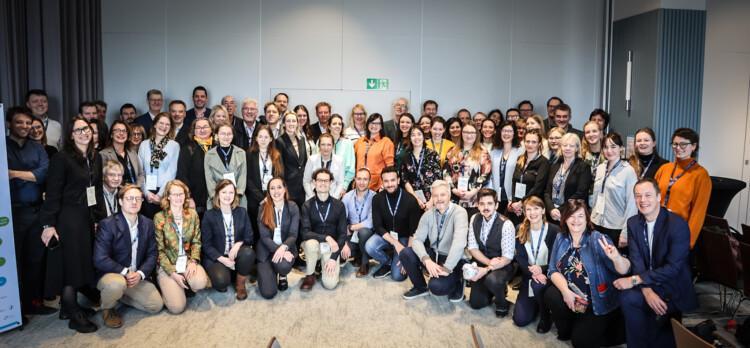Baltic Sea and North Sea cooperation takes a leap towards sustainable use of the seas – marine multi-use areas support nature and sectors
The Finnish Coordination of Maritime Spatial Planning Cooperation, seven coastal regional councils and the Finnish Ministry of the Environment participated in the eMSP NBSR project between the Baltic Sea and the North Sea in 2021-2024. The results of the project were presented at the final seminar in Gdansk, Poland, at the end of January. Now that the project is nearing its end, it is time to reflect on the work done over the past two and a half years. You can find out more about the themes of sustainable blue economy in Finland’s maritime areas through a story map.

The eMSP NBSR (emerging Ecosystem-based Maritime Spatial Planning topics in the North and Baltic Sea Regions) project, as its name suggests, focused on reviewing and updating the ecosystem-based approach. Other key themes in maritime spatial planning were also addressed extensively through five thematic clusters, namely:
- Ocean Governance (OG)
- Sustainable Blue Economy (SBE)
- Ecosystem Based Approach (EBA)
- Data Sharing (DATA)
- Monitoring and Evaluation (M&E)
In addition to these components, a cross-cutting theme running through the project was the integration of climate change into marine spatial planning.
The project, which started in autumn 2021, was launched in a time when the deadline set by the European Union’s Marine Spatial Planning Directive (2014/89/EU) for partner countries to prepare and adopt their first Marine Spatial Plan had been reached. The countries represented by the project partners were therefore facing a moment when it was time to review the completed MSPs and to learn lessons from the work done for the next round of updates.
The importance of transboundary integrated maritime spatial planning, improving the harmonisation and accessibility of information, applying the precautionary principle and the importance of stakeholder involvement in the monitoring and evaluation process were some of the key messages from the project.
Marine multi-use to support sustainable blue economy
The Finnish Maritime Spatial Planning Coordination was particularly involved in the sustainable blue economy learning strand of the project, led by the project’s Belgian partner Blauwe Cluster.
“The development of marine energy production, in Finland initially mainly offshore wind, will bring permanent infrastructure to marine areas. This puts pressure on the coordination of activities to ensure that there will also be space for marine food production and that conservation objectives can be met,” says Laura Pietilä, project planner.
As a cross-cutting theme, the project looked at marine multi-use areas, or MariParks, as a way to coordinate marine activities and thus manage the increasing pressures on the marine space.
The key idea behind MariParks is to integrate activities from different sectors in shared marine areas, overlapping or coexisting in a nature-inclusive way.
“Marine multi-use is seen as a way to create a controlled development pattern in marine areas and to promote sustainable use of marine resources,” says Pietilä.
“For us, the key was to find marine multi-use opportunities that fit the Finnish context: for example, the Finnish fishing and fish farming environments are quite different from those in the North Sea. One model will not work everywhere, and the MariPark concept needs to be considered in our own maritime planning process together with Finnish entrepreneurs,” Pietilä continues.
The workshops organised in the project used the Community of Practice (CoP) method, which is based on co-creation of knowledge.
Blauwe Cluster organised international CoP workshops on marine food production, energy production, nature and multi-use. The Finnish Coordination of Maritime Spatial Planning brought the themes into the context of Finnish marine areas. In addition to the workshops, the MariPark concept was worked on in Finland with a team of experts from a management perspective, considering, among other things, the possibilities of co-location of different actors and compensation models for nature-inclusive planning in a multi-use area.
Find out more about the sustainable blue economy reflections in Finland and the multi-use concept in the story map.
Key outputs from the project include a policy recommendations for climate-smart maritime spatial planning, application of ecosystem-based approach to maritime spatial planning, and a monitoring and evaluation process. The results are available on the project website and can be accessed in more detail here: Results – eMSP NBSR (emspproject.eu).
NB! eMSP NBSR project will participate in the European Maritime Day in Svendborg, Denmark, 30-31 May 2024. Register to attend and learn more about the project’s work. Link to the event website: European Maritime Day – European Commission (europa.eu).


